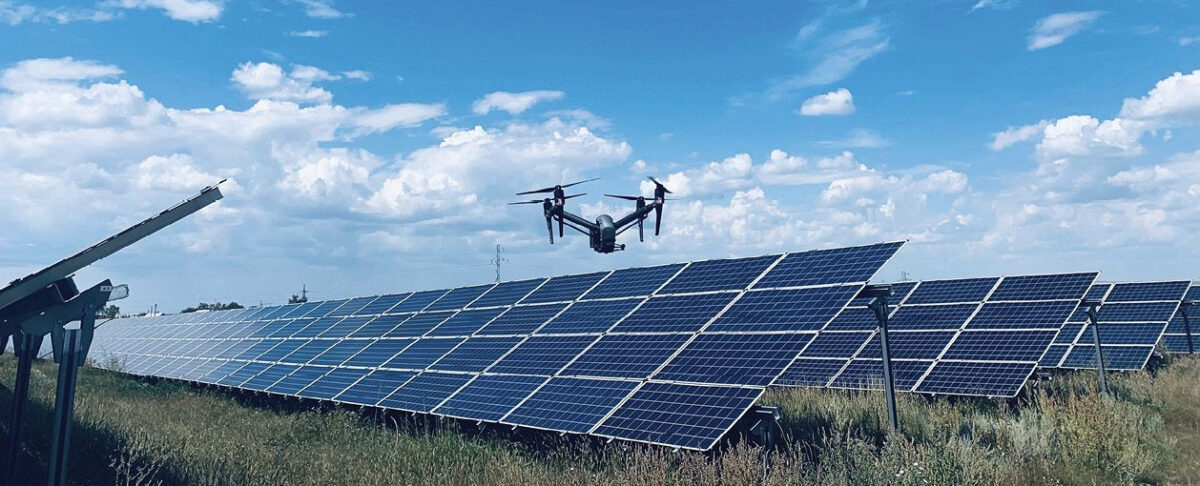The idea that solar panels would one day be available for €0.10 ($0.17)/Wp of generation capacity would have seemed ludicrous a few years ago. But that was the European Union spot price published by retailer pvXchange for low-cost panels in December 2023.
No matter which price graph you consider, there is a clear, slippery-slope trend. Solar manufacturing has been through a boom, with module demand way beyond supply in what was very much a seller’s market but it’s no secret that the road ahead for solar manufacturing is likely to be rocky. Analysts are predicting a downturn, with crystalline silicon-based manufacturers set to struggle to break even. The consequent casualties may affect solar project warranties.
For manufacturers to maintain margins, or even just to survive, something has to give. Typically, that raises questions about materials supply and manufacturing quality. Similarities to the wind industry spring to mind.
Numerous factors can affect manufacturing processes but the strong association between quality and profitability cannot be ignored.
This might raise an important question for PV project owners. What measures will future-proof projects against issues of module quality?
Quality testing is important to protect revenue, extend product lifetimes, and eliminate warranty-claim inefficiency. Two levers are available to project owners.
Third parties
Certified third parties can be contracted to test PV modules at manufacturer factories or ISO 17025-accredited laboratories.
Sample testing is typically based on ISO 2859-1 standards that use the acceptable quality limit (AQL) methodology. AQL determines whether an order has met client specifications. It defines defects that mean test failure so project owners can reject any given sample.
Additional tests or inspections during construction might also be utilized, including electroluminescence (EL) testing after delivery or installation, via an independent third party.
If a project owner opts against quality control, they face the danger of receiving a batch that another owner has rejected.
Engineer Skyray and consultant Everoze have devised a set of employer’s requirements for engineering, procurement, and construction (EPC) contracts. These include the technical requirements for EPC work, commissioning, and quality testing.
For PV module quality control, a five-step process is required.
Factory inspections
A certified inspector should examine manufacturer facilities, reviewing manufacturing-process quality systems, as well as the procedures for raw material procurement, storage, and component traceability. The production process should also be reviewed. Product quality control should include EL and wet leakage current testing, as well as a pre-shipping visual inspection.
The inspection should include at least a visual inspection and measurement of power output. The following details should be checked or tested on a defined sample of panels: serial number, module type, package number, open circuit voltage, short-circuit current, power at the maximum power point, maximum power point voltage, current at maximum power point, fill factor, test date, record date, and EL testing carried out according to International Electrotechnical Commission (IEC) criteria.
A mechanical data inspection should be carried out to an inspection level based on AQL methodology and should include module and component dimensions, as well as label marking and weight conformity.
Lab results
Manufacturer testing results can be verified by sending random batch samples to a lab for visual inspection, electrical insulation, and EL testing. The latter should detect hot burns, inactive parts, cracks, and micro-cracks, according to criteria agreed with the manufacturer, and maximum power measurement.
A small selection of modules should be subject to potential-induced degradation testing, according to the IEC 62804 standard.
For positively-doped, “p-type” cell technology, such as passivated emitter rear cell (PERC) solar, additional testing may be required to determine susceptibility to light-induced degradation or light-elevated temperature induced degradation.
After shipping
Post-shipping tests determine whether transport conditions are aligned with manufacturer guidelines and can reveal module defects.
Samples should be randomly selected, in accordance with AQL, and IEC 61215-aligned visual inspections performed as well as in situ EL testing to detect defects such as unproductive areas or cell micro-cracks.
Post installation
This stage primarily confirms that construction conditions are aligned with the manufacturer’s guidelines and that modules are free from defects. Similar testing (visual inspection and EL tests) can be carried out on a sample. This is important when determining where defects may have arisen, such as during transportation or installation, and where contractual responsibility lies.
Commissioning issues
Finally, a thermographic survey by drone is recommended to evaluate defects such as bypass diode issues, disconnected strings, or breakages during construction. Solutions are now available for post-treatment data, artificial intelligence-based detection, geolocation of anomalies, and automatic reporting.
The cost of these services has dramatically reduced due to a highly competitive market and rapid technological improvement. Such inspections enable project owners to have a global view of their plant after commissioning and offer many positive benefits.
Although solar development is a technical industry, commercial feasibility underpins its success. Clients not only want to develop technically sound projects but also financially sustainable ones that provide value to shareholders.
With a potentially rocky road ahead, project owners must consider the avenues available to help future-proof their projects. Everoze highlights the fact that thorough module testing can help illuminate the road ahead.
 About the authors: Martin Laing has worked with Everoze’s United Kingdom and Ireland solar advisory team since 2019. He has managed technical due diligence transactions involving lenders, investors and developers. Laing has also managed multiple long-term operational monitoring projects.
About the authors: Martin Laing has worked with Everoze’s United Kingdom and Ireland solar advisory team since 2019. He has managed technical due diligence transactions involving lenders, investors and developers. Laing has also managed multiple long-term operational monitoring projects.
 Gauthier Dambrine is a project manager at Skyray. He has more than 10 years’ experience in solar and wind. Dambrine has held technical positions in the design, development, certification, and installation of solar fixed-tilt and tracking systems in Europe, the Middle East, Africa, and Asia.
Gauthier Dambrine is a project manager at Skyray. He has more than 10 years’ experience in solar and wind. Dambrine has held technical positions in the design, development, certification, and installation of solar fixed-tilt and tracking systems in Europe, the Middle East, Africa, and Asia.
The views and opinions expressed in this article are the author’s own, and do not necessarily reflect those held by pv magazine.
This content is protected by copyright and may not be reused. If you want to cooperate with us and would like to reuse some of our content, please contact: editors@pv-magazine.com.








By submitting this form you agree to pv magazine using your data for the purposes of publishing your comment.
Your personal data will only be disclosed or otherwise transmitted to third parties for the purposes of spam filtering or if this is necessary for technical maintenance of the website. Any other transfer to third parties will not take place unless this is justified on the basis of applicable data protection regulations or if pv magazine is legally obliged to do so.
You may revoke this consent at any time with effect for the future, in which case your personal data will be deleted immediately. Otherwise, your data will be deleted if pv magazine has processed your request or the purpose of data storage is fulfilled.
Further information on data privacy can be found in our Data Protection Policy.